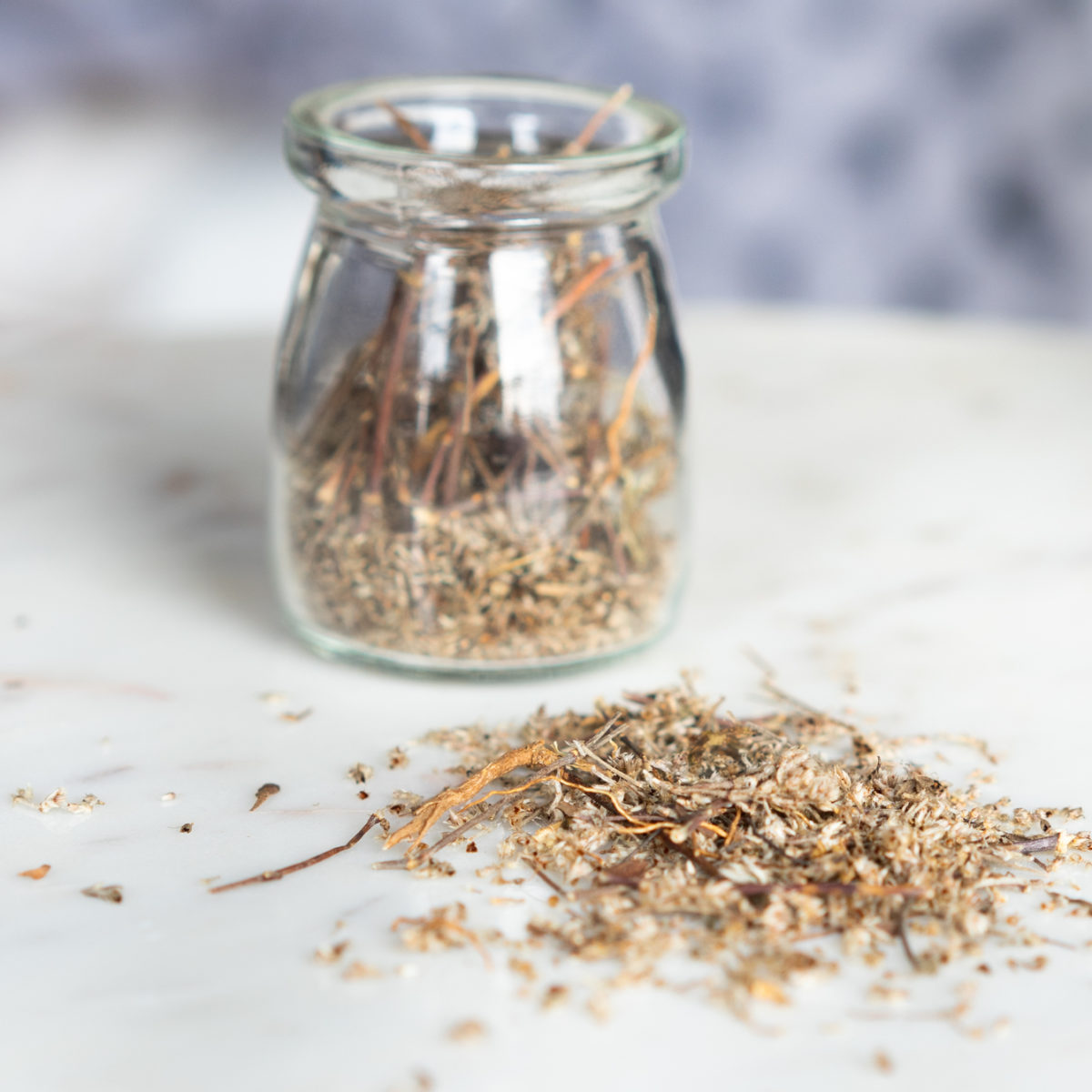
COMMON NAME (Chinese Name)
Chinese Anemone (Bái Tóu Weng)
BOTANICAL NAME
Anemone Chinensis
USES
Historical uses of Chinese anemone supplements include treating painful conditions of the reproductive organs, including testicular pain and swelling, menstrual pain, and the control of genital herpes outbreaks in women. There is some empirical evidence to support its efficacy in controlling menstrual cramps and reducing genital pain among adults with mumps. Otherwise, there are few studies on the efficacy of Chinese anemone supplements regarding these specific uses.
Conversely, most contemporary research focuses on Chinese anemone’s potential use as an effective oral treatment for gastrointestinal inflammation, especially in people with IBS and dysentery. Additionally, novel research focuses on the use of Chinese anemone extract in combination with other herbal supplements to treat esophageal inflammation and spasms that cause coughing, as well as a wide variety of other traditional multi-herb combination therapies. Most modern medicinal applications for Chinese anemone rely on its anti-inflammatory and antispasmodic properties. As a result, different researchers have noted its different potential uses for minimizing the discomfort associated with tension headaches, muscle cramps/spasms, hyperactivity and restlessness, and other conditions related to muscle tension and inflammation.
Research shows that inhaling the fumes of Chinese anemone extracts has some short-term effects on brain activity. This calms EEG activity, which suggests that this type of therapy has some potential use in treating insomnia, hyperactivity, and restlessness. Topical applications of Chinese anemone extracts have some notable effects in controlling bacterial and fungal infections.
PREPARATION & ADMINISTRATION
Not to be confused with Japanese Anemone (Anemone Hupehensis; Da Po Wan Hua Hua). Chinese anemone is most commonly available dried and crushed, as the fresh plant is highly irritating to skin, mouth, throat, and digestive tissues. Some specialty stores carry additional options for use like tinctures, extracts, and tablets. The whole plant can be used in these preparations, though the roots are the most significant source of medicinal benefits.
PRECAUTIONS
There is currently a persistent issue with fake Chinese anemone supplements, so you should take care to make sure any supplements you purchase are from trustworthy and verifiable sources. Otherwise, there isn’t sufficient research available to say for sure what the potential side-effects and interactions may be when taking these supplements.
You should consult with a certified herbalist, physician or other qualified healthcare professional before taking Chinese anemone.
REFERENCES
Agrawal, Teena. “Anemone Pulsatilla a Useful Drug Plant.” Journal of Natural & Ayurvedic Medicine, vol. 2, no. 6, 2018, doi:10.23880/jonam-16000146.
Bell, Iris R., et al. “Short-Term Effects of Repeated Olfactory Administration of Homeopathic Sulphur or Pulsatilla on Electroencephalographic Alpha Power in Healthy Young Adults.” Homeopathy, vol. 100, no. 4, 2011, pp. 203–211., doi:10.1016/j.homp.2011.06.005.
Goyal, et al. “RECENT ADVANCES AND SPORADIC PHYTOCHEMICAL AND PHARMACOLOGICAL REVIEW ON POTENTIAL HERBS OF THE GENUS ‘PULSATILLA.’” Pharma Science Monitor, vol. 8, no. 3, 2017.
Łaska, Grażyna, and Aneta Sienkiewicz. “Antifungal Activity of the Rhizome Extracts of Pulsatilla Vulgaris against Candida Glabrata.” European Journal of Biological Research,
Mumps (Homeopathy), https://wa.kaiserpermanente.org/kbase/topic.jhtml?docId=hn-2245007.
Romm, Aviva, et al. “Menstrual Wellness and Menstrual Problems.” Botanical Medicine for Women’s Health, Churchill Livingstone, 4 Dec. 2009,
Romm, Aviva, et al. “Vaginal Infections and Sexually Transmitted Diseases.” Botanical Medicine for Women’s Health, Churchill Livingstone, 4 Dec. 2009,
Shi, Yuhua, et al. “Rapidly Discriminate Commercial Medicinal Pulsatilla Chinensis (Bge.) Regel from Its Adulterants Using ITS2 Barcoding and Specific PCR-RFLP Assay.” Scientific Reports, vol. 7, no. 1, June 2017, doi:10.1038/srep40000.
Wang, Xuewei, et al. “Modified Pulsatilla Decoction Attenuates Oxazolone-Induced Colitis in Mice through Suppression of Inflammation and Epithelial Barrier Disruption.” Molecular Medicine Reports, vol. 14, no. 2, Feb. 2016, pp. 1173–1179., doi:10.3892/mmr.2016.5358.
Zanasi, Alessandro, et al. “Does Additional Antimicrobial Treatment Have a Better Effect on URTI Cough Resolution than Homeopathic Symptomatic Therapy Alone? A Real-Life Preliminary Observational Study in a Pediatric Population.” Multidisciplinary Respiratory Medicine, vol. 10, no. 1, July 2015, doi:10.1186/s40248-015-0022-3.
